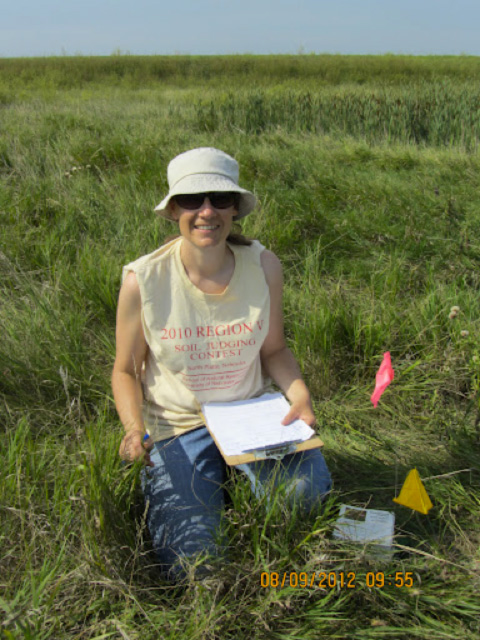
Ph.D. Candidate, North Dakota State University
Field Travel Grant Type 1
Multi-element composition of soil profiles as indicators of past and present ecosystem integrity in prairie wetlands
“Wetland ecosystems are regularly influenced by humans through agriculture disturbance from non-point source pollution. Due to their shallow nature, prairie potholes are particularly vulnerable to human impacts. Soil chemistry is a fundamental characteristic of wetlands and plays an important role in current discussions of the National Wetland Condition Assessment (NWCA), but wetland monitoring is often limited regarding chemical parameters due to high costs associated with detailed soil chemical analysis. Also, there is insufficient research on landscape influence of the multi-element composition within the wetland. A historical baseline of the health of wetlands in the prairie pothole region is needed to understand the anthropogenic and natural impacts over time. For instance, soils in Colorado high-elevation lakes have accumulated lead and cadmium since industrialization. Such timelines are not obvious from physical observations of soil profiles, as is common in dryland soils, because hydric, wetland soils, typically display very poor differentiation of layers deposited over time – they are characterized by a homogeneous grey color.
Because the human frame of reference has the tendency to adapt to recent conditions, as a society we have already come to understand the prairie potholes in what we consider to be a natural state and not necessarily the historic condition before the arrival of western civilization (the concept of shifting baselines, coined by D. Pauly in 1995). Once we understand the natural geochemical background of potholes we can then formulate a reference point, which we can use for comparison of natural and restored wetland conditions. This will facilitate better understanding of the relationships between biodiversity and other ecosystem services and disturbances by human activities.
My project will produce several tangible results: (1) assessment of the variation in multi-element composition of wetland soils in the soil record (as measured in profile depths for the concentrations of more than 50 elements including many relevant to the Toxic Substances Control Act, Section 10, 15 U.S.C. 2609, such as arsenic, cadmium, copper, lead, mercury, and uranium, as well as emerging contaminants, such as rare earth elements), (2) interpretation of that variation in relation to historic events, such as the advent of first agricultural processes (plowing), the Dust Bowl era, the use of lead additives in gasoline, and the recent proliferation of rare earth elements in industrial production, and (3) establishment of a bench-mark for ecosystem restoration through comparison with the multi-element composition of wetland soils of historically pristine undisturbed soils.”
